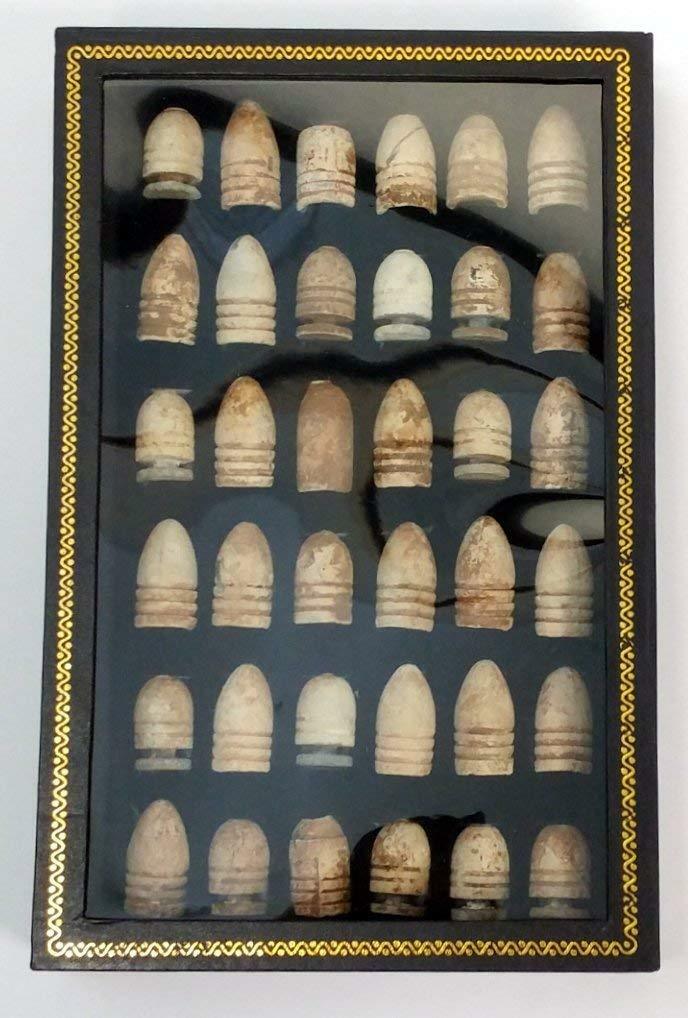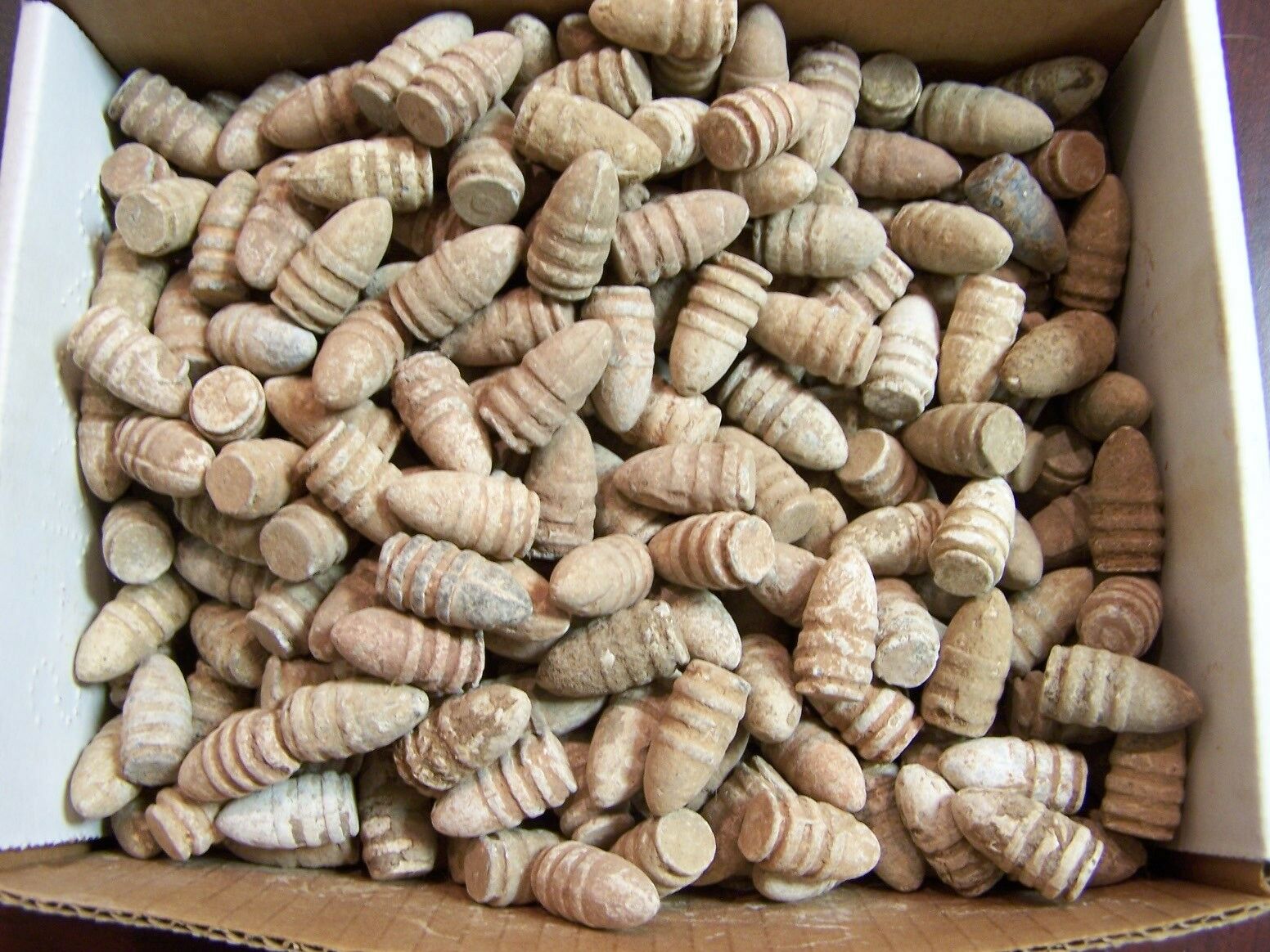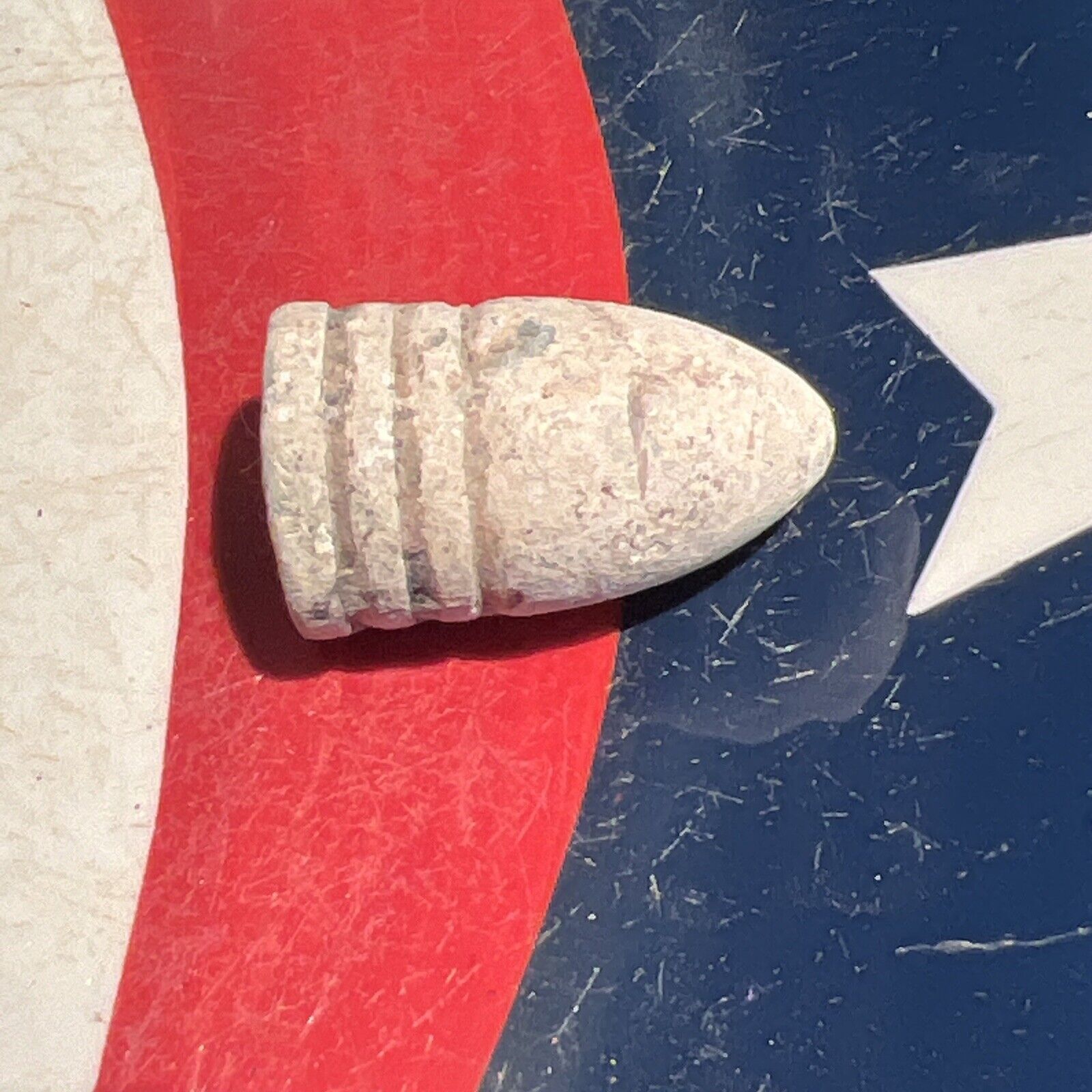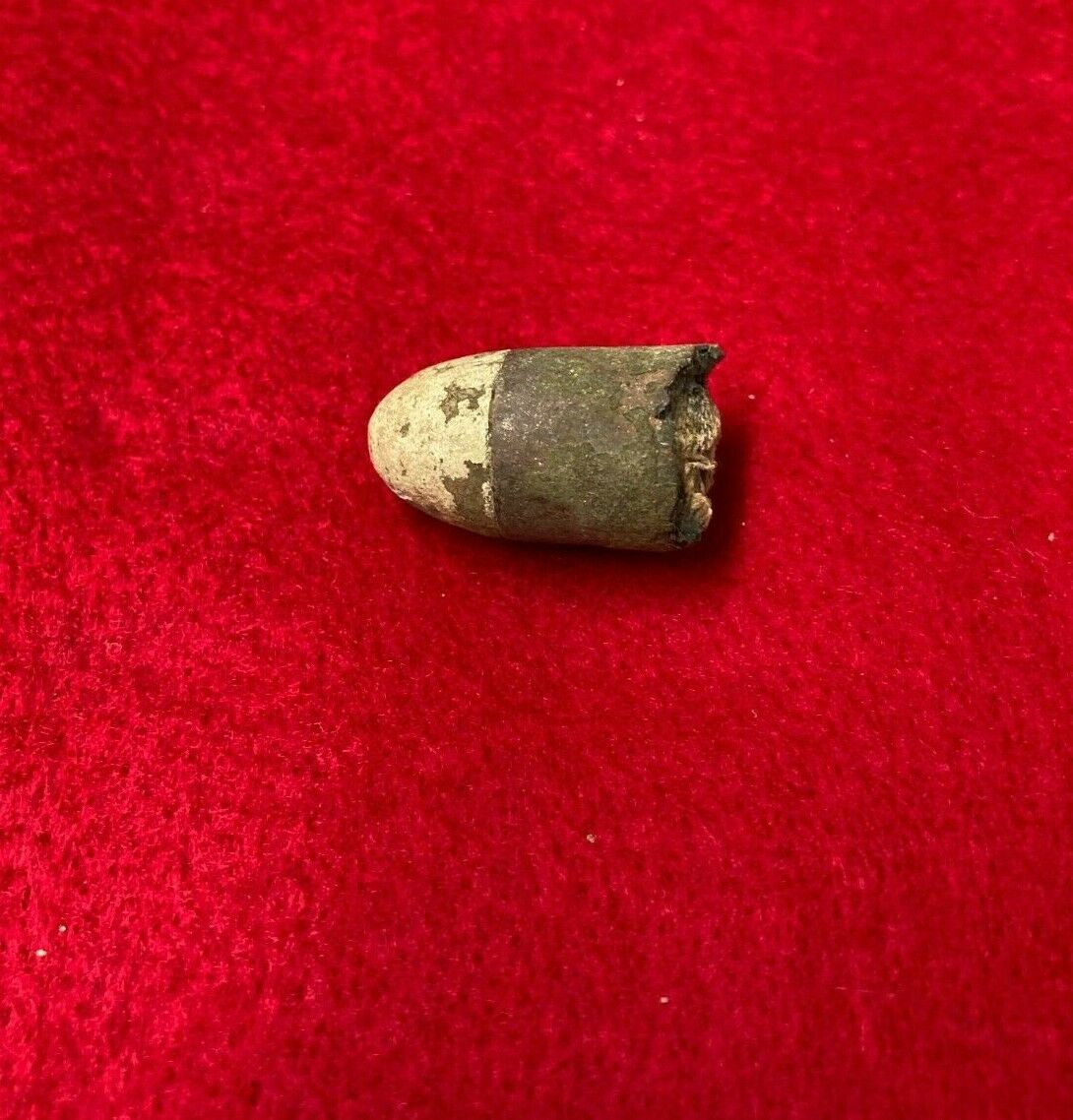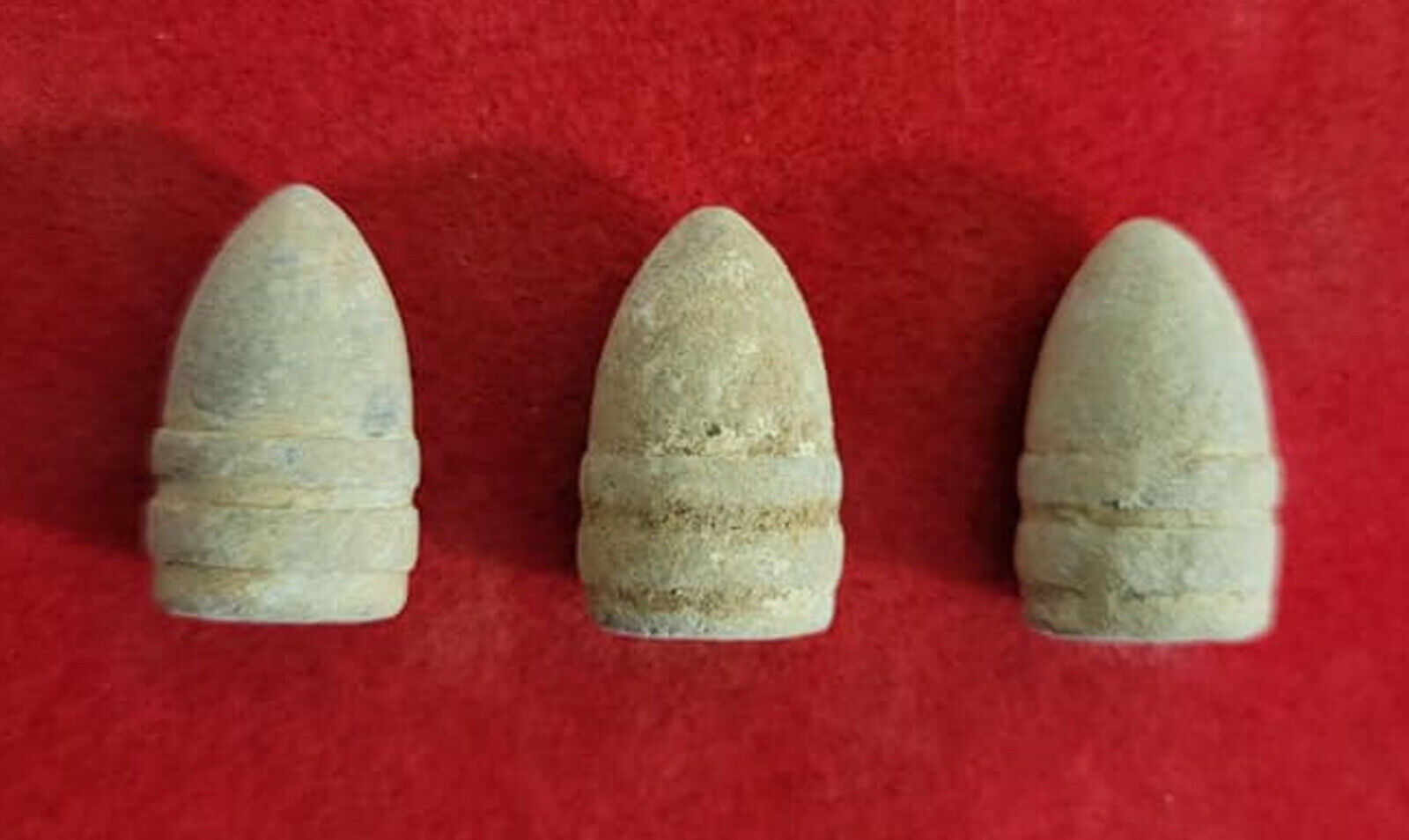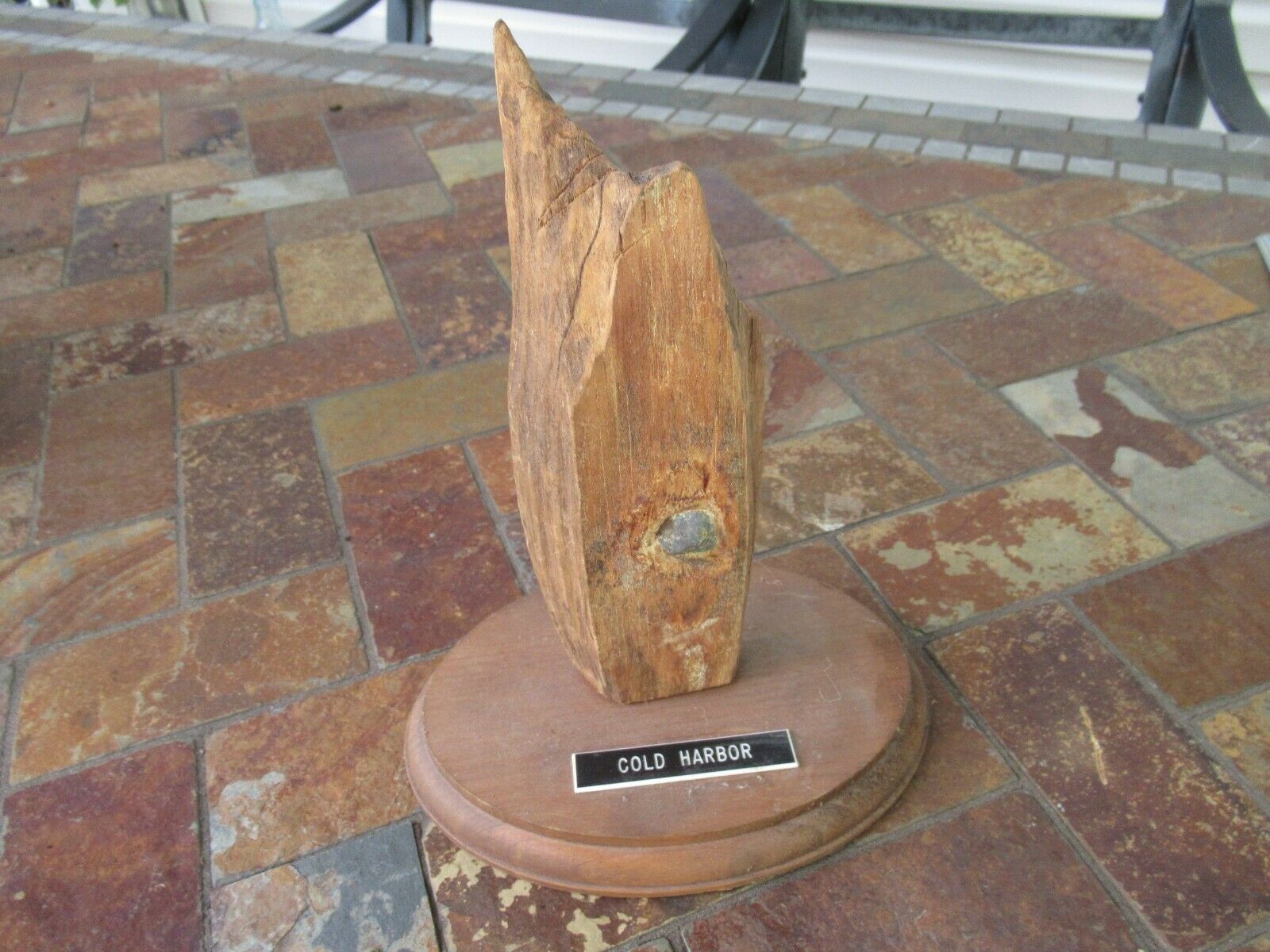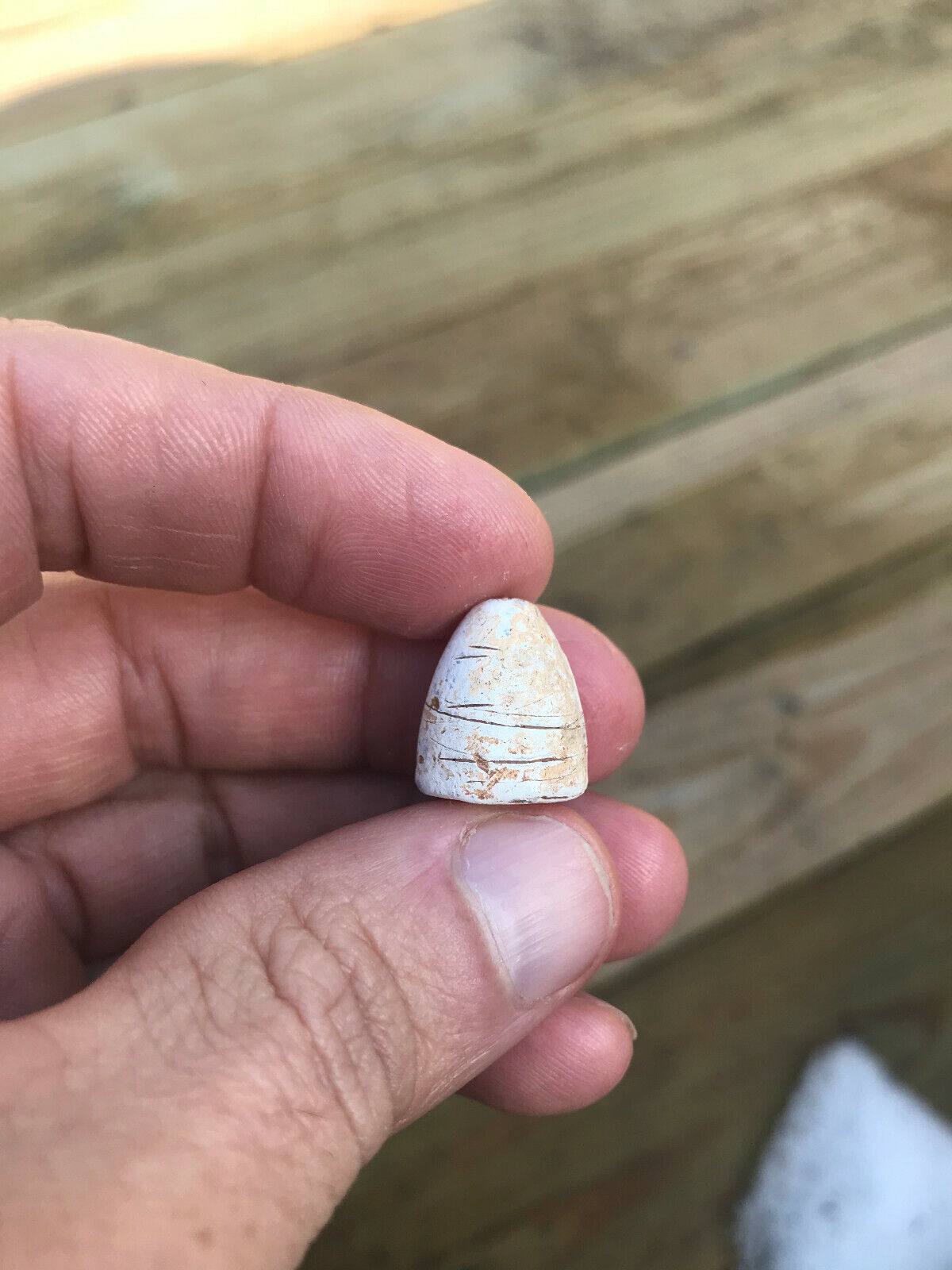-40%
Halltown WV Rion Hall Civil War Relic Fire Melted Lead Bullet Found Bill Gavin
$ 10.55
- Description
- Size Guide
Description
We are working as partners in conjunction with Gettysburg Relics to offer some very nice American Civil War relics for sale. The owner of Gettysburg Relics was the proprietor of Artifact at 777 on Cemetery Hill in Gettysburg for a number of years, and we are now selling exclusively on eBay.RION HALL NEAR HALLTOWN, WEST VIRGINIA / ARMY OF WEST VIRGINIA CAMP - FROM THE BILL GAVIN COLLECTION - An interesting fire melted bullet measuring 1 7/8" by 3/4" and weighing 1.1 ounce (a typical round weighed about 1 ounce)
This fire melted bullet measuring 1 7/8" by 3/4" and weighing 1.1 ounce (a typical round weighed about 1 ounce), was a part of the collection of the famous relic hunter Bill Gavin and was in a group of relics that were identified as having been found at Rion Hall near Halltown West Virginia and were identified in Gavin's own Original display case # 40. Bill Gavin was the first relic hunter to use a metal detector to search for Civil War artifacts (back in the 1940s - the first location was Cold Harbor in 1946) and amassed a huge collection of items in the decades that followed. Gavin wrote four books, including the well-know "Accoutrement Plates North and South, 1861-1865" and several articles and was well respected for his knowledge in the field. He passed away in 2010.
Rion Hall
'Rion Hall is a late Federal style house near Halltown, West Virginia. Built in 1836, it consists of a three-story brick house
with a two-story kitchen wing connected by a wood hyphen. The house was used as a headquarters for General Philip H. Sheridan during the American Civil War.
The house was built in 1836 by William Lucas. Lucas was the son of Robert and Sarah Rion Lucas, and was born at Cold Spring.
In 1838, Lucas was elected to the United States House of Representatives, serving a total of three terms. At William Lucas' death, the property passed to his son, Daniel Bedinger Lucas, a lawyer and a poet, who was briefly appointed to the US Senate by the Governor of West Virginia,
but not seated. With Daniel Lucas' death the property passed to Virginia Lucas, whose accidental death in 1929 left the house vacant for ten years. In 1938 the house changed hands and underwent renovation.
Rion Hall is located atop a small hill near the old Halltown Road in Jefferson County, within view of the Shenandoah River. Once the seat of a two thousand acre estate, it is still surrounded by the remains of its 19th century curtilage, which includes a wide variety of trees, from stately cedars to fruit trees of many varieties, as well as much shrubbery. Rion Hall consists of two, connected structures - the main three-story-house and a two story structure that was originally a- detached kitchen. The two buildings are now connected by a two story wooden gallery, A fine example of Late Federal style architecture, the main residence, built in 1836, does, however, contain important Greek Revival-style elements. Both the main and the supporting structures of Rion Hall are of brick masonry construction. Originally, the main structure was two stories in height with a central dormer at the -_hip roof line over the central bay. A third story was added late in the 19th century by then owner Daniel B. Lucas at which time the house assumed its present predominately Federal appearance. As it stands today, the main house of Rion Hall has a well-defined, rather plain and clean appearance. Three bays wide, the building has several recesses, including a recessed central bay. The front facade contains windows at each level in each bay; these are double hung with 8 over 8 panes. The i single exception to this is the window of the central bay on the second level - it is a tripartite window (a typically Greek Revival element) that is double hung with 12 over 12 panes and is flanked by 3 over 3 sidelights. The windows on the first and second levels have flat arched brick headers. The same window arrangement is seen on the rear facade (except that there is no tripartite central window). The rear entrance way is arched. The Greek Revival portico at the front entrance to Rion Hall is supported by four Doric columns and two pilasters and is surmounted by a gable roof with a plain triangular pediment. The front entrance door itself is flanked by segmented sidelights and surmounted by an elliptical fanlight. Paired end chimneys with corbeled caps are found at both side elevations of the main structure, which are bridged, in classical fashion, by a horizontal dentiled parapet which conceals the gabled roof ends. d his feature is dona in the fashion of end walls of Adam-style residences of the earlier Federal period. The dentiled cornice is composed of brick headers and stretchers. An interesting aesthetic aspect of the front facade are the two metal masonry braces that are found in the upper most brick courses of the front facade and run from . front to rear of the building. At the front facade the "bolt heads" take the form of two stars. The plan of the interior of the main house is classically Federal in nature. A large central hall runs the length of the house on the first level with two rooms on either side of the hall. There is a large "grand" staircase, as well as an enclosed servants stairs at the end of the hall. This plan is repeated on upper floors with only slight modification. Each room in the main house is provided with a fireplace and mantel, . several of which still bear the saber marks inflicted during the period of its occupation by General Sheridan.
The secondary building of Rion Hall is a two-story brick masonry building that once served as the detached kitchen and servants'quarters. It has a gable roof and contains one massive end chimney. Window design repeats those of the main residence. The setting of Rion Hall is both stately and well ordered. Due in large part to its architectural and environmental integrity, Rion Hall has long been regarded as one of the foremost landmarks of the lower Shenandoah Valley
Rion Hall, located near Halltown, Jefferson County, West Virginia, is significant as home to two illustrious members of the highly significant Lucas family, both of whom were prominent in Virginia and West Virginia public life;' as headquarters for General Philip H. Sheridan during the American Civil as a center of significant literary activity;3 and as a fine representative example of late Federal architecture in Jefferson County.
Rion Hall was constructed in 1836 by William Lucas (1800-1877), the same year that his 2nd cousin, Robert Lucas, was completing his second term as governor of Ohio. Coming from one of Jefferson county's oldest and most respected families, William was born in 1800 at the Lucas family home "Cold Spring" (entered in the National Register of I Historic Places, August 17, 1973), the son of Col. Robert Lucas. William Lucas began his professional career as a teacher, but soon turned to law, studying under famed Virginia jurist Henry St. George Tucker. Shortly after the construction of Rion Hall by William Lucas, he was elected to the Virginia General Assembly, serving for the 1837-1839 session. In 1838 William was elected, as a democratic, to the U.S. House of Representatives. Defeated for re-election in 1840, Lucas was re-elected to a second term in 1842; serving in Congress 1839-41 and 1843-45. Congressman Lucas was aboard the "Princeton" with President Tyler and his cabinet on February 28, 1944 when the notorious gun explosion killed Secretary of State Abel P. Upshur and Navy Secretary Thorns 3. Gilmer and others. Lucas was offered the Virginia Governorship in the 1840's but declined. William Lucas was a prominent member of the Virginia constitutional convention of 1850-51. In his later years, Lucas became an avid horticulturist and transformed the Rion Hall estate into a showplace of arbors and formal gardens. Upon the death of William Lucas, Rion Rall passed to his son Daniel Bedinger Lucas (1836-1909). Daniel B. Lucas, born the same year Rion Hall was constructed, is an individual prominent in the public history of West Virginia, as well as bring a noted poet and author (see item 3). A prominent attorney, he journeyed to New York City during the closing months of the Civil War in an unsuccessful attempt to defend his friend John Pates Beall against charges of espionage. Daniel B. Lucas became quite influential in Democratic party circles, and in 1884 was elected to represent Jefferson County in the West Virginia House of Delegates, and re-elected in 1886; serving 1885-1887. In the legislative session of January - February 1887, Lucas was the leader of the so-called "apostacy of the twelve" that effectively blocked the re-election -of U. S . Senator Johnson N. Camden, democratic party "boss" of West Virginia. Upon the expiration of Camden's term on March 5, 1887, Governor E. Willis Wilson appointed Daniel B. Lucas to the U.S. Senate to fill the
Halltown, West Virginia
Halltown is an unincorporated community on land that was originally owned by William Hall that is along Flowing Springs Run in Jefferson County, West Virginia, United States. Halltown is located off U.S. Route 340 on West Virginia Route 230 between Charles Town and Bolivar. A few houses, a fork in the road, a tiny post office, and the large Halltown Paper Plant are the distinguishing features of the community. The community was named after the Hall family, owners of a farm near the town site.'
A provenance letter will be included with this relic.
We include as much documentation with the relics as we possess. This includes copies of tags if there are original identification tags or maps, as well as a signed letter of provenance with the specific recovery information.
All of the collections that we are offering for sale are guaranteed to be authentic, and are either older recoveries, found before the 1960s when it was still legal to metal detect battlefields, or were recovered on private property with permission. Some land on Battlefields that is now Federally owned, or owned by the Trust, was acquired after the items were recovered. We will not sell any items that were recovered illegally, nor will we sell any items that we suspect were recovered illegally.
Thank you for viewing!












